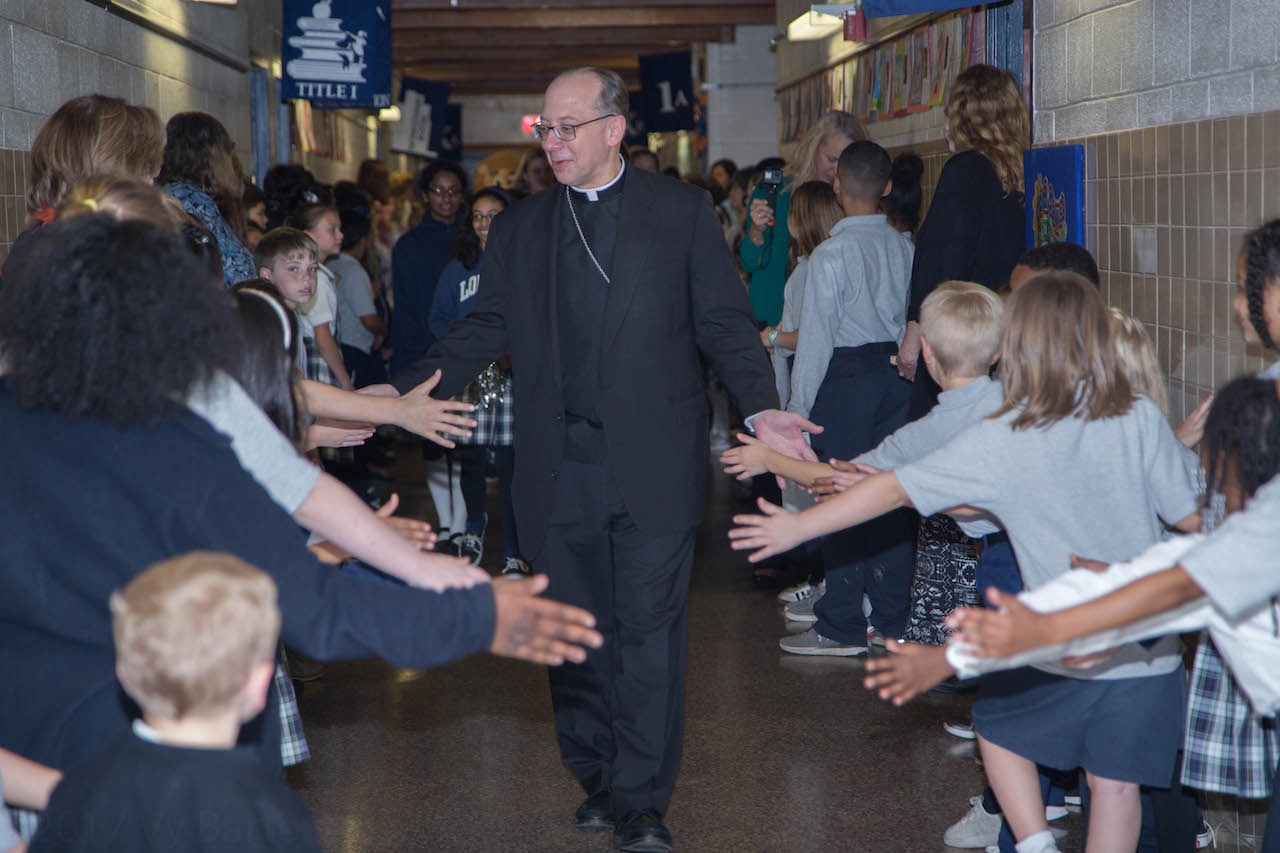During the last two months, I have been traveling throughout the diocese to visit parishes and to administer the sacrament of confirmation. At one parish I celebrated Mass with the students, teachers, staff and parents of the parish’s school. The school children served as lectors, sang in the choir, led the prayer of the faithful and presented the offertory gifts.
During the reception that followed Mass, people recalled memories of their years as students at the school, their pride evident as they shared their stories. All saw the school as a key part of their lives and of parish life.
What I heard here is what I have heard at our other regional and parish schools: a determination to make sure the school is strong and sustaining its mission. This is important be- cause there are many challenges facing Catholic schools. The primary one is financial.
That is why we initiated the Learn to Lead campaign last year as a way of raising money
for scholarships, professional development for teachers, leadership, and grants for schools in need. Our goal is $30 million — $18 million to be raised by the diocese; $12 million to be raised by the schools.
From the early 19th century until the mid- 1960s, religious communities — particularly sisters — provided our schools throughout the United States, including our diocese, with a large pool of high-quality, low-cost teachers. That’s not the case today. To hire and keep the highly professional, well-prepared men and women who teach in our schools comes with a worthwhile but costly investment in our children.
One of the first decisions I had to make after becoming bishop of our diocese was to close Holy Cross School, Lynchburg. This was a painful deci- sion for me and for those affected by its closing.
Knowing that the biggest challenges facing our diocesan elementary schools are financial, I determined a couple of years ago that we would do what we could to strengthen and sustain our Catholic schools.
There are three major components to sustaining Catholic schools. The first is a strong, visible Catholic identity. Due to the involvement of pastors and many faith-filled men and women, we are blessed with a great Catholic identity in our Catholic schools.
The second is academic excellence. Data from multiple studies shows that our schools provide strong academic preparation and formation. For many children this is a path toward higher education and successful lives and careers. This is a story alumni from each of our schools can tell.
Catholic schools were one of the few bright spots during COVID. While other school systems closed, ours remained open. Administrators implemented measures to ensure a safe learning environment while teachers adapted their methods to make sure students continued to receive quality instruction.
Our decision did not go unnoticed. Not only did students and their parents appreciate having in-person education, but others took note. The following academic year our overall enrollment increased nearly 4%.
Affordability is the third component. In order to make sure we meet our budgets, tuition has to be higher than the modest tuition parents paid years ago when religious sisters provided most of the teaching staff. Keep in mind that the average tuition in our schools covers only about 70-80% of the cost of a student’s education. The difference is made up in other ways.
Through support from generous donors — often alumni who appreciate the positive impact a Catholic school education has had on their lives — we’re able to make up part of the remaining 20-30%. Endowment income, subsidies from the parish with a school, along with an assessment of all diocesan parishes on their offertory collection, cover the rest.
Something about which all Catholics should be aware is Virginia’s Education Improvement Scholarships Tax Credits (EISTC). Donations to approved foundations like the diocese’s McMahon Parater Scholarship Foundation provide scholarships to students from low-income families at non-public schools. Individual or business donors receive a 65% percent tax credit for their contributions. Further information is available at https://richmonddiocese.org/office/mcmahonparater-foundation/.
EISTC is a blessing that is often challenged by state legislators who do not support school choice. We need to be vigilant in monitoring what is happening in the Senate and House of Delegates regarding EISTC lest it not be sustained. The Virginia Catholic Conference https://vacatholic. org can assist you with information and updates in that regard.
Catholic education is an integral part of the Church’s mission. I’m grateful for all those who have an interest in and support for Catholic schools, especially through their participation in Learn to Lead. While Catholic schools would not exist without the generosity of our donors and parish families, nor would they exist were it not for the committed educators for whom teaching is not only a profession, but a vocation. Our teachers help us sustain our Catholic identity and excellence in education.
This Thursday, April 20, I’ll be gathering with teachers from each of our elementary schools
for the annual Excellence in Education awards presentation sponsored by our diocesan Office
of Catholic Schools. I am grateful to our teachers who, like so many involved in our parish catechetical programs, are vital in helping us pass on the faith to another generation.
On March 1, 2014, Pope Francis tweeted, “Let us thank all those who teach in Catholic schools. Educating is an act of love; it is like giving life.”
I couldn’t agree more.

